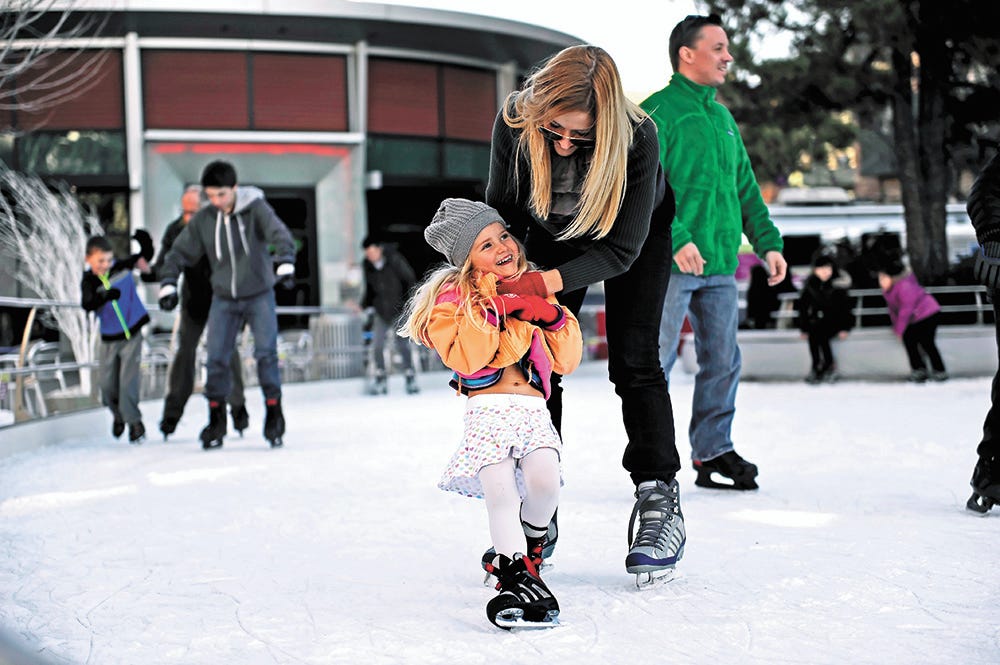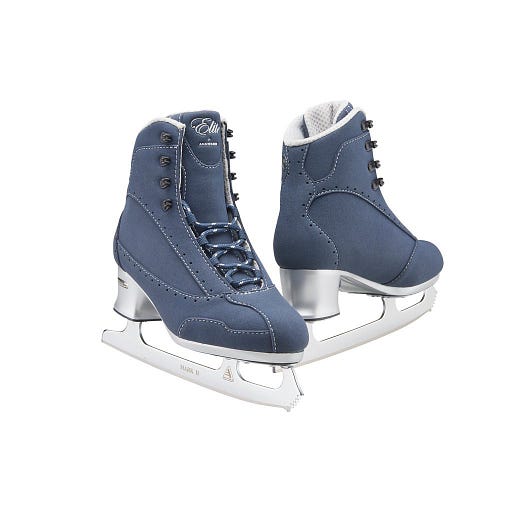Ice Skating Outdoors: Equipment Maintenance & Safety Tips

’Tis the season! As temperatures plummet below freezing, we bundle up, brighten our homes with festive lighting, and enjoy the coziest time of the year with loved ones. For ice - enthusiasts, that usually means we get to share our favourite winter pastime with friends and family: skating!
We partnered up with Victoria Smith to present a three-part series: the where, what, and how’s of outdoor skating in North America! You can find our first edition, the top 20 places to skate outdoors across North America and Part 2 What to pack for the *coziest* skate outdoors.
In our third installment, we are going to cover how to maintain your equipment to ensure that you have many years of scenic skating ahead of you.
We’re also going to provide some helpful tips about how you can stay safe (and stay on your feet) in the outdoor conditions! The best medicine is preventative! Here’s how to can protect your skates *before* you step foot on the ice:
You get what you pay for: Buy a quality pair of skates
It doesn’t have to been ridiculously expensive, but you can expect to pay at least $200 for a decent boot & blade combo. Competitive skaters are known to dole out for new equipment every season! No matter what you spend, be sure it’s a quality product. I choose Jackson Ultima because they offer a Leather Carbon Fiber (LCF) sole, which makes the boots lighter and water/torque resistant. This means less wear and tear and more life span.
- Pro-tip: if you’re invested in recreational skating, check out Softec by Jackson Ultima. These affordable boot & blade combos are *ultra* comfortable.

Sharpen Your Blades!
As you put in your hours on the ice, you will ‘round’ out the edges on your blade, which leads to slipping or “losing an edge”. For better stability, make sure to sharpen your blades regularly (approximately every 10–12 hours of skating) and inspect them for damage, especially after a skate outdoors. Frozen debris, such as rocks or twigs, can superficially damage a blade. These nicks can be sharpening out by a professional.
- Pro tip: you can buy a skate stone or a Sweet-Stick to maintain your edge between sharpening, but these tools should never replace a proper sharpening. Make sure to ask your sharpener for advice before you take a stone to your blades and watch your fingers!

Protect Your Blades
Speaking of sharpening, there are more ways to add longevity to your blades.
Always wear a hard skate guard when walking from the changeroom (or your
outdoor bench) to the ice surface. You can rely on brands like Guardog to
protect your blades on the go. Be careful though! Make sure there is no ice
beneath your guard, or you’ll learn the hard way that plastic and frozen water *do not* mix. This is especially important when you’re in-transit outdoors as the edge between snow/walk way and ice may not be apparent.
- Pro tip: you can also transport your skates in a soft guard when they aren’t on your feet. Just make sure that you air out your blade completely in a dry area after use. If you leave your guards on for a prolonged period, especially hard guards in a humid environment (*cough — damp basements — cough*), your blades will rust! This can require multiple sharpenings to repair.
Moisture: Your Skate’s Worst Enemy.
You’ll learn one way or another that a dry skate, is a happy skate (and an even happier skater). I recommend using a product like Sno-Seal to water-proof your boots, even if you use an LCF sole. You can also invest in some activated charcoal skate inserts to dry up any unwanted dampness within your skates (this will also help keep them smelling *fresh*).
A second pair of skates (or a retired pair).
- Look no further than Olympian Carol Heiss Jenkins to back this claim. She
swears by a second pair of “outdoor” skates to keep her regular equipment in tip-top condition. If this works for the 1960 Olympic champion, it works for me!
Stay Safe:
Your safety is paramount in ensuring a comfortable skate, indoors or outdoors. That being said, there are some things to keep in mind if you dare to bear the great outdoors this winter:
Stay dry (and alive).
- Ideal outdoor ice thickness is between 4–8 inches thick. This can be tested using an auger or an ice chisel.
- Use common sense when skating on frozen lakes and ponds by following the
directives of local authorities.
- Never skate alone.
- Avoid ice with visible cracking or near moving water.
- Skate-quality ice should be a clear blue.
Protect Your Noggin
If you’re new to skating, it’s important to wear a helmet (and extra padding!). No *real* skater would ever chastise you for making this choice, no matter your age. Believe it or not, but learning how to fall is an important part of learning to skate. Until you’ve mastered this skill (and some even more fun ones to keep you on your feet), keep your head protected. Don’t get too over-confident!
Always check the conditions of your ice, especially outside as they can change rapidly. No skater is ever too experienced to check their conditions. One bad rut could mean a nasty fall, or even a broken ankle. It’s best to skate on ice that’s regularly maintained, and skate in accordance to the conditions.

Trust In Your Shocks!
Like an off-roading vehicle, you have an important suspension to maintain. Trust in your knees and ankles, and when in doubt, imagine you’re sitting on a motorcycle. Bending from the waist and looking down is bad for alignment, which means it’s bad for balance!
That’s it for the do’s and don’ts, enjoy your outdoor skating experience!
Victoria Smith is a Canadian choreographer and synchronized skating coach. She was a member of NEXXICE senior from 2013 to 2017, earning the world title in 2015. She also helped NEXXICE earn 2 world medals (2014 silver, 2017 bronze), and 3 Canadian titles (2014, 2015, 2017). As a choreographer, she has worked with Team France (Chrysalides), Team Australia (Team Unity, formerly Fire on Ice), Team Turkey (Team Vizyon), and Team Great Britain (Team Zariba). She is currently a head coach at Évolution Synchronized Skating Teams in Québec, Canada.
Alongside competition and coaching, Victoria began skating professionally in 2015. She has since skated for various productions in Canada, the USA, and Germany as an ensemble skater and semi-principal. She currently works as an assistant-choreographer and installer for ISF Productions.
Beyond the rink, Victoria has earned a Bachelor of Arts, Honours History degree from the University of Guelph, and her TEFL Certification from the University of Toronto. She also works as an English teacher in Québec.
